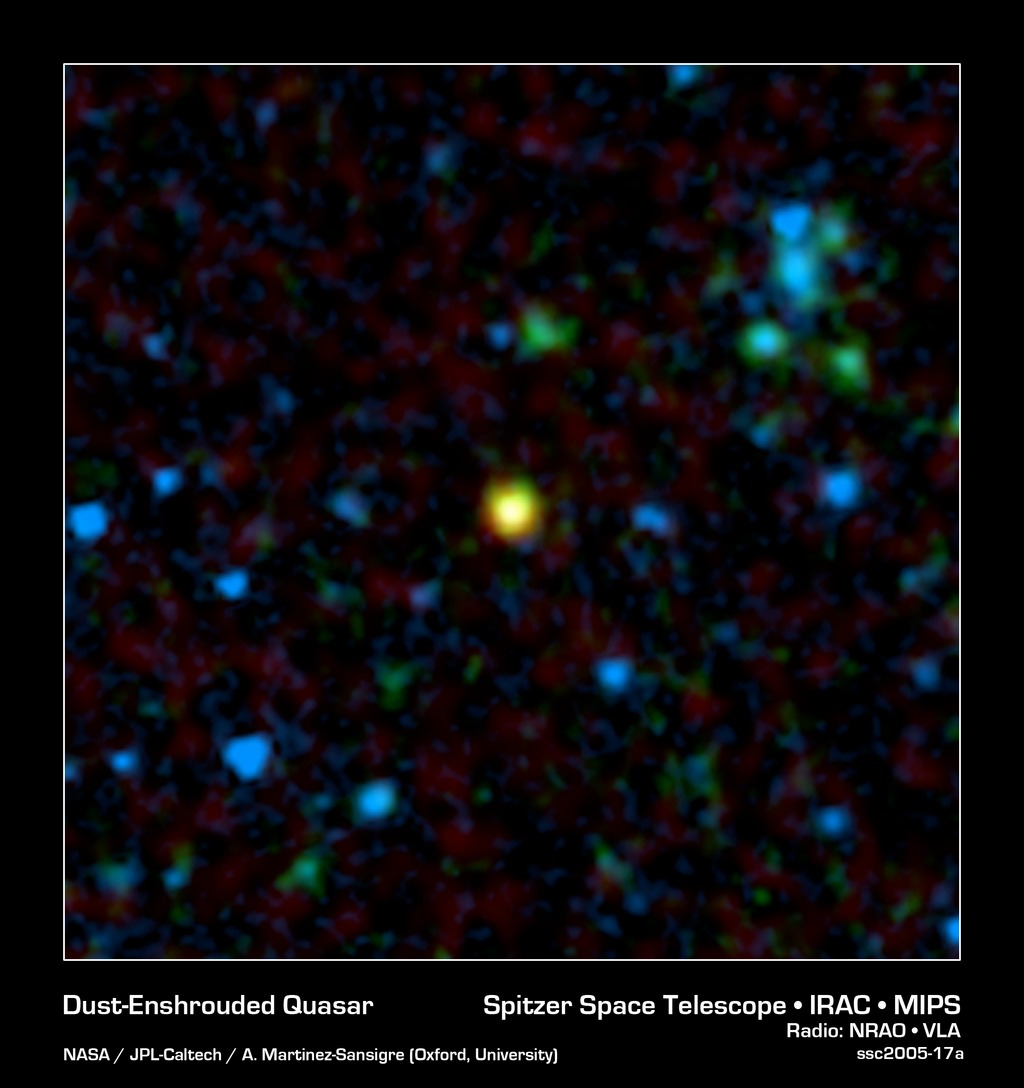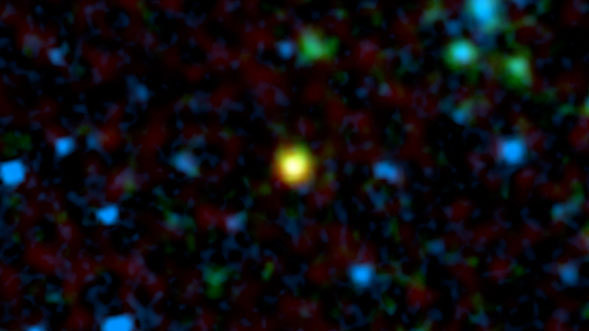
Credit: NASA/JPL-Caltech/A. Martinez-Sansigre (Oxford University)
Observation • August 3rd, 2005 • ssc2005-17a
ssc2005-17a
This false-color image from NASA's Spitzer Space Telescope shows a distant galaxy (yellow) that houses a quasar, a super-massive black hole circled by a ring, or torus, of gas and dust. Spitzer's infrared eyes cut through the dust to find this hidden object, which appears to be a member of the long-sought population of missing quasars. The green and blue splotches are galaxies that do not hold quasars.
Astronomers had predicted that most quasars are blocked from our view by their tori, or by surrounding dust-drenched galaxies, making them difficult to find. Because infrared light can travel through gas and dust, Spitzer was able to detect enough of these objects to show that there is most likely a large population of obscured quasars.
In addition to the quasar-bearing galaxy shown here, Spitzer discovered 20 others in a small patch of sky. Astronomers identified the quasars with the help of radio data from the National Radio Astronomy Observatory's Very Large Array radio telescope in New Mexico. While normal galaxies do not produce strong radio waves, many galaxies with quasars appear bright when viewed with radio telescopes.
In this image, infrared data from Spitzer is colored both blue (3.6 microns) and green (24 microns), and radio data from the Very Large Array telescope is colored red. The quasar-bearing galaxy stands out in yellow because it emits both infrared and radio light.
Of the 21 quasars uncovered by Spitzer, astronomers believe that 10 are hidden by their dusty tori, while the rest are altogether buried in dusty galaxies. The quasar inside the galaxy pictured here is of the type that is obscured by its torus.
About the Object
- Name
- Type
- Galaxy > Activity > AGN > Quasar
- Distance
- 1,000,000,000 Light Years
- Redshift
- 1.98
Color Mapping
| Band | Wavelength | Telescope |
| Infrared | 3.6 µm | Spitzer IRAC |
| Infrared | 24.0 µm | Spitzer MIPS |
| Radio | 21.0 cm | VLA |
Astrometrics
- Position (J2000)
- RA =17h 14m 29.7s
- Dec = 59° 32' 33.5"
- Field of View
- 0.0 x 0.0 arcminutes
- Orientation
- North is up





